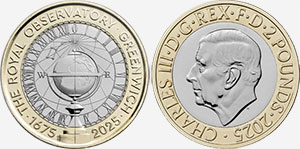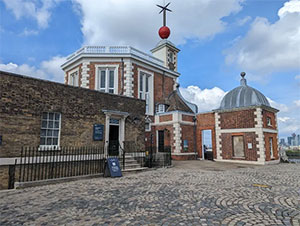350 Years of the Royal Observatory Greenwich
By Coinsanduk | Thursday, 21 August 2025
The Royal Mint released several coins to commemorate the 350 years of the Royal Observatory Greenwich in partnership with the National Maritime Museum. The reverse design, by Henry Gray, depicts several scientific elements that have contributed to some of the historic discoveries made by the Royal Observatory.
The Royal Observatory Greenwich was founded in 1675 by King Charles II of England with the primary goal of solving the longitude problem to improve maritime navigation. On the edge of the coin, inscription PERFECTING THE ART OF NAVIGATION where taken from the Royal Warrant signed by Charles II in March 1675.
At the time, sailors could determine their latitude (north-south position) by observing the sun or the North Star, but had no accurate way to find their longitude (east-west position) at sea, which led to numerous shipwrecks.
The problem was so severe that in 1714, the British government passed the Longitude Act, offering a huge prize (£20,000, which is over a million pounds today) to anyone who could solve it.
The problem was eventually solved by John Harrison, a clockmaker who, over several decades, developed a series of sea clocks (chronometers) that were robust and accurate enough to withstand the rigors of a sea voyage.
A chronometer is specifically designed to function reliably in the harsh, unpredictable conditions of a sailing ship, including constant motion, and changes in temperature and humidity.
The foundation of the Royal Observatory Greenwich's stone was laid on August 10, 1675, and John Flamsteed moved into the completed building on July 10, 1676. His work in mapping the stars laid the groundwork for the Observatory's future contributions to navigation, timekeeping, and astronomy.
The Royal Observatory Greenwich is no longer used for its original scientific purpose of astronomical research and navigation. The institution's scientific work was moved out of London in the mid-20th century due to increasing light and air pollution, which made accurate observations impossible.
Today, the Royal Observatory Greenwich is a major public museum and tourist attraction and is managed as part of Royal Museums Greenwich.
Specifications
- Composition: Inner: Cupro-nickel. Outer :Nickel-brass
- Weight: 28.4 g
- Diameter: 12 mm
- Edge: Fine milled incuse edge lettering
Silver, silver piedfort and gold collector versions of the coin were also released.




